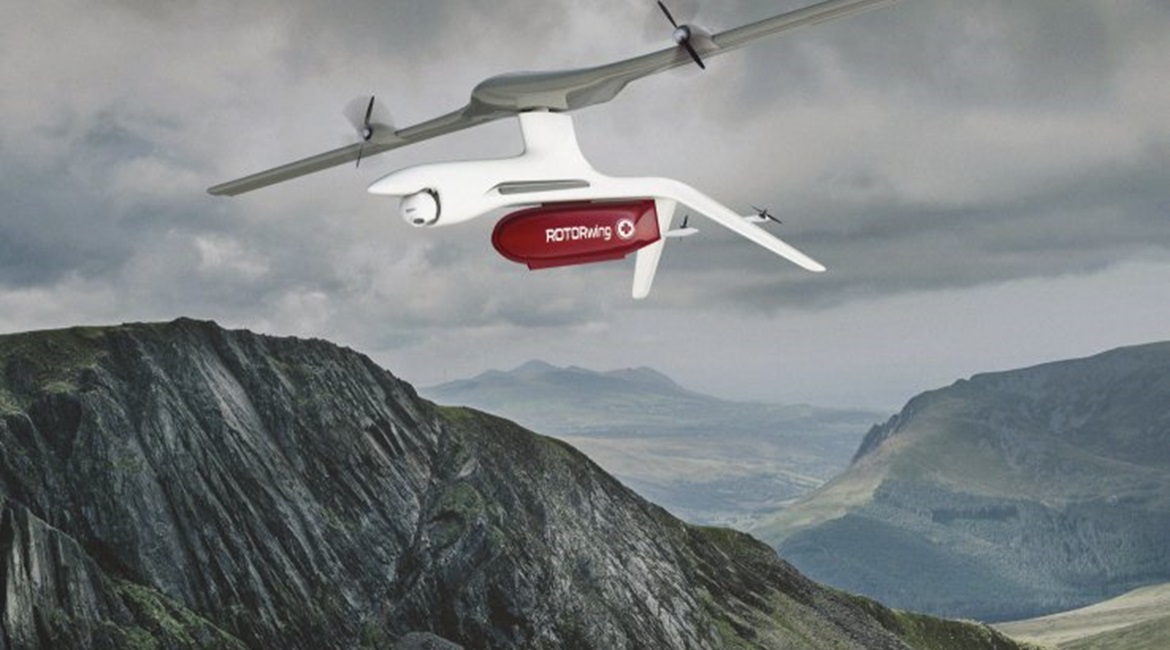
DZYNE Technologies has developed an electric vertical take-off and landing (VTOL) unmanned aerial vehicle (UAV) that uses a whole wing as a rotor that does not compromise forward flight performance when transitioned to fixed-wing mode.
The aircraft, called ROTORwing, is designed to optimise hovering and forward flight. For takeoff, the ROTORwing has one wing facing forward and the other tilted approximately 180° back to face in the opposite direction. This allows the wing to spin, similar to a rotor when power is applied.

DZYNE Technologies' ROTORwing UAV uses its whole wing to launch and land vertically before transitioning into forward flight. The gray legs on the front of the aircraft that allow vertical take-off and landing tilt back before forward flight to minimise drag. (DZYNE Technologies)
When the rotor revolutions-per-minute (RPM) goal is reached, the aircraft can be commanded to hover using the full wing/rotor for lift. A small tail-rotor is used for aircraft fuselage pointing. Thus, a large tail-rotor is not needed to cancel engine torque as it would in a helicopter because there is no torque reaction to the fuselage.
The ROTORwing’s rotor is propelled directly by the motors on the wings, eliminating the need for heavy and complex gearboxes, swashplates, and high-power tail rotors, according to the company. At a safe altitude, the wings are quickly tilted upward to arrest the rotor spin. The rotor then locks into position with both wings tilted so the engine faces forward. This allows the aircraft to fly similarly to a conventional fixed-wing UAV.
Looking to read the full article?
Gain unlimited access to Janes news and more...






